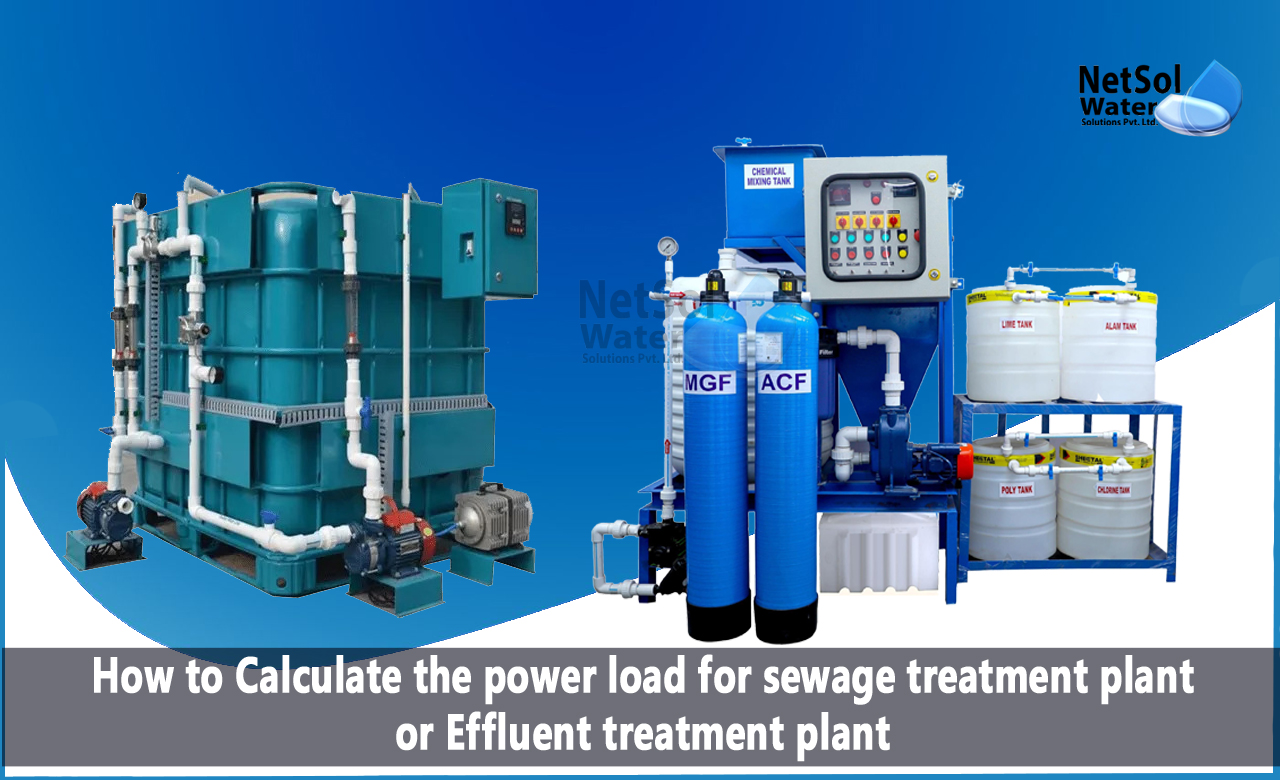How to Calculate the power load for STP plant or ETP plant?
Sewage treatment plants (STPs) and Effluent treatment plants (ETPs) are vital infrastructure for industries and municipalities around the world. These treatment plants play a crucial role in protecting the environment by treating wastewater and effluent to make it safe for discharge into natural water bodies or for reuse. However, running an STP or ETP can be an energy-intensive process, with significant electricity costs. Calculating the power load required for an STP or ETP is essential for efficient operation and cost management.
In this blog, we will explore how to calculate the power load for STPs and ETPs in detail, taking into account the flow rate, organic load, and treatment process.
Step 1: Determine the Flow Rate
The first step in calculating the power load for an STP or ETP is to determine the flow rate of the wastewater or effluent being treated. This is typically measured in cubic meters per hour (m3/hr). The flow rate can be determined by measuring the volume of wastewater or effluent produced by the industry or facility each day and dividing it by the number of hours in a day.
Step 2: Calculate the Organic Load
The organic load of wastewater or effluent refers to the amount of organic matter present in it, which is usually measured in terms of biochemical oxygen demand (BOD) or chemical oxygen demand (COD). This is important to determine as it affects the amount of energy required to treat the wastewater or effluent. The organic load can be measured by collecting samples and analyzing them in a laboratory.
Step 3: Determine the Treatment Process
The next step is to determine the treatment process required for the wastewater or effluent. The treatment process can vary depending on the quality of the wastewater or effluent and the regulatory requirements for discharge. The power load will depend on the specific treatment process selected, such as aeration, sedimentation, or biological treatment.
Step 4: Calculate the Power Load
Once the flow rate, organic load, and treatment process are determined, the power load can be calculated using the following formula:
Power Load (kW) = Flow Rate (m3/hr) x Organic Load (kg BOD/day or kg COD/day) x Specific Energy Consumption (kWh/kg BOD or kWh/kg COD)
The specific energy consumption (SEC) is the amount of energy required to treat one kilogram of BOD or COD and depends on the treatment process selected.
Step 5: Determine the Total Power Consumption
To determine the total power consumption of the STP or ETP, the power load calculated in step 4 is multiplied by the number of hours the plant will operate each day.
Total Power Consumption (kWh) = Power Load (kW) x Operating Hours per Day
Conclusion
Calculating the power load for an STP or ETP is important for efficient operation and cost management. The power load depends on the flow rate, organic load, and treatment process selected. By using the formula and steps outlined in this blog, the power load for an STP or ETP can be accurately calculated, allowing for efficient and cost-effective operation of the plant.
Contact us on +91-9650608473 or send an email to enquiry@netsolwater.com to find out more.



